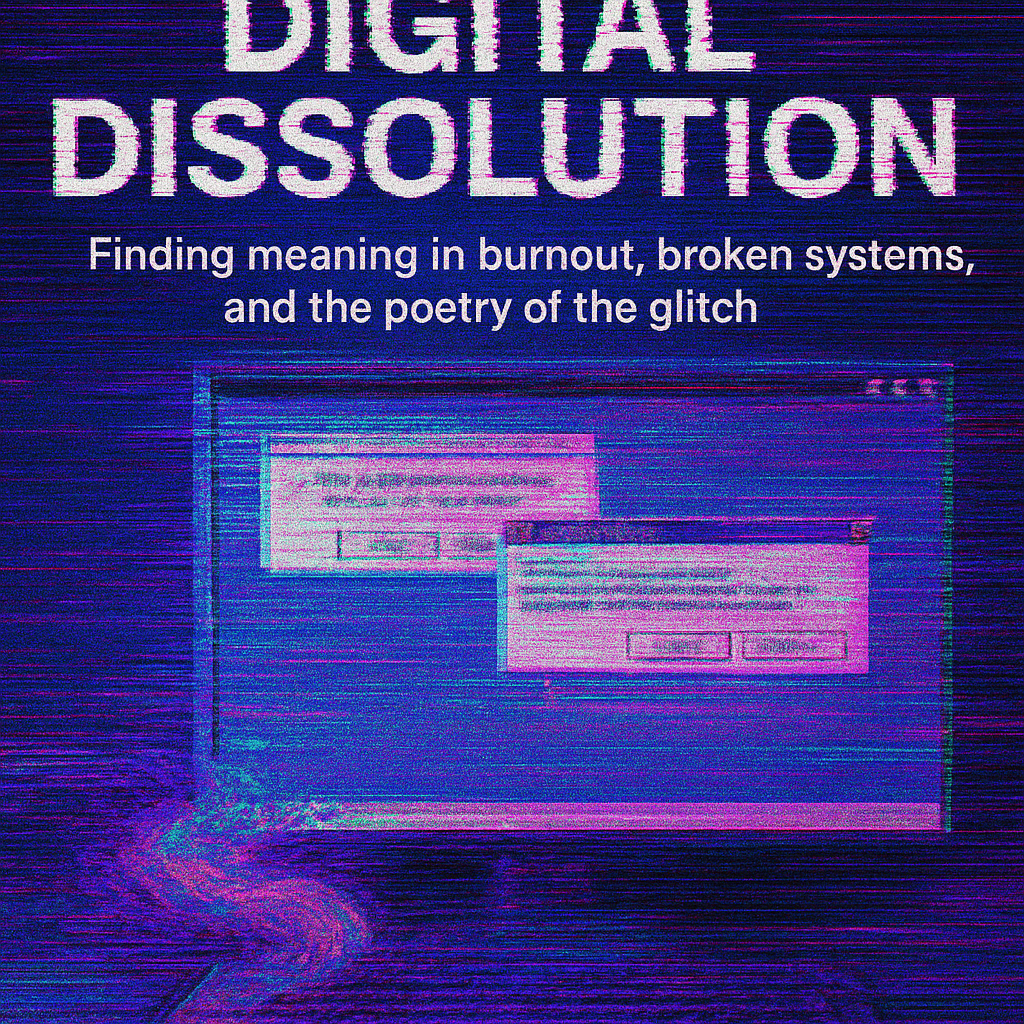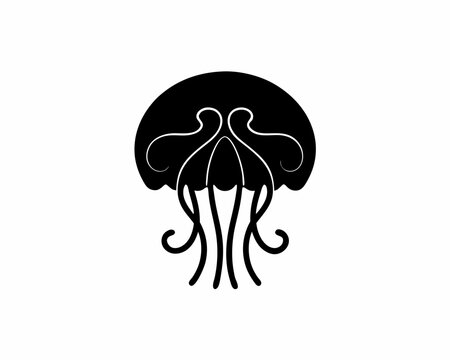
Digital Dissolution
Finding Meaning in Burnout, Broken Systems, and the Poetry of the Glitch
Have you ever felt overwhelmed by your screen’s demands? Notifications accumulating at an unmanageable pace, tabs multiplying beyond measure, overwhelming your browser, your mind, and your peace. Amidst the overwhelming digital noise, something within you… fades quietly away, like a whisper lost in chaos.
That’s digital dissolution — the crucial moment when emotional exhaustion peaks, encountering the raw, unyielding edges of the machines we rely on. It’s more than just failure. It’s a signal, a call for attention.
Through the complex, multifaceted lens of my alter ego Auralia, a glitch-bot, digital researcher, and poetic resistor, I’ve embarked on a journey of discovery and introspection. I’ve explored how digital fatigue and emotional vulnerability can become rich sources of creativity, profound reflection, and spirited resistance.
So let us delve deep into unraveling what it truly means to fall apart in this digital age — and explore the undeniable power in doing so, in allowing ourselves to untether from relentless expectations.
Digital Burnout Is Real (and It’s Not Your Fault)
Let’s call it what it is: We are beyond tired. Tired of screens blaring incessantly with a flood of information and notifications. Of feeds that never stop updating, engulfing us in a relentless cycle of content consumption and curation. Of the exhausting pressure of always being expected to be “on,” constantly engaged, and always available for the demands of the digital world.
This burnout isn’t limited to professional obligations alone. It’s about the entire atmosphere of digital life, an omnipresent cloud that impacts every corner of our daily existence. The relentless push to be impossibly productive, eternally responsive, and incessantly optimized creates an environment where lives are measured by digital outputs. To constantly perform, post, and present a curated self in high definition 24/7 becomes the norm, leading to a disconnect from our authentic selves.
We’ve identified this phenomenon as digital exhaustion—a pervasive force quietly shaping our relationships, shrinking our attention spans, and subtly altering our sense of self. It seeps into interactions, turning face-to-face connections into transactional exchanges, as genuine interaction gives way to digital dialogue. Our attention spans, reduced by the rapid digital influx, become fleeting and fragmented, impacting our ability to focus and engage.
Critically, we must recognize: this isn’t just a personal problem. It’s a structural one, intricately rooted in daily systems designed to maximize engagement and profit, often at the expense of our well-being. This is built into the framework of interactions with the digital world, feeding into a self-perpetuating cycle, forcing us to question the very architecture of our digital existence.
Yet, amidst what seems like an overwhelming digital landscape, there could be a silver lining. And perhaps, there’s an opportunity for learning and growth in the cracks and crevices as these systems falter. Within these imperfections, we might uncover new insights, alternate pathways, and a renewed sense of agency in engaging with technology and the digital frameworks that govern our lives.
What If Your To-Do List Glitched Beautifully?
Consider a notion that’s unorthodox — and wonderfully quirky:
What if digital interfaces weren’t merely tools — but transformed into poetic spaces?
Poetic interfaces are exquisite designs shifting the focus toward emotion, aesthetics, and surprise rather than efficiency. Imagine a task manager that dissolves completed tasks into a mesmerizing shower of stardust, or a website that creatively degrades and miraculously rebuilds itself over time.
They remind us that tech needn’t be slick, cold, or soulless. It can be beautiful. Strange. Even tender and unexpectedly intimate.
Such digital experiences invite us to genuinely feel – not just mindlessly scroll and consume.
There’s Comfort in Things Falling Apart
Surprisingly, there’s something deeply human and comforting about watching a system glitch.
When a website unexpectedly crashes, an image distorts, or an app stutters — we are reminded that even advanced machines can falter. This makes it easier to forgive ourselves for our own instances of breaking and imperfection.
These moments of digital dissolution can bring:
-
✸ Profound relief from the relentless pursuit of perfection
-
✸ Nostalgia for the early, messier days of the internet
-
✸ Fresh creative inspiration — where errors become unexpected art
Not everything needs to work perfectly. Sometimes, the cracks are not just incidental; they are, in fact, the point.
⚠ Glitch as Resistance
In a world increasingly obsessed with control, glitching is a radical act.
Glitch art, broken code, and digital errors have become subversive ways to push back against the glossy, hyper-polished interfaces surrounding us.
From a perspective rooted in feminism and justice, glitches aren’t mere technical faults — they reveal hidden or excluded aspects lurking beneath the surface:
-
Facial recognition systems failing to recognize dark-skinned faces
-
Algorithms reinforcing bias while erasing complexity and nuance
-
Interfaces assuming uniformity in movement, feeling, or thinking
When something glitches, it’s more than a simple error. It often highlights what the system was never designed to handle but must now confront.
Who Gets to Design the System?
This introduces a key concept from design justice: Technology isn’t neutral. It reflects the values, biases, and assumptions of its creators.
When a machine fails — we should ask probing questions like:
-
Who was this designed for exactly?
-
Who was inadvertently excluded in the process?
-
What truths does the glitch reveal about the system’s foundational weaknesses?
By attentively examining these failures, we are empowered to develop tools and systems that are more inclusive, honest, and inherently human.
Let It Fall Apart (Softly)
Digital dissolution isn’t about abandoning technology. It’s about creatively reimagining it and inviting new possibilities.
It’s about discovering gentleness amid apparent chaos, finding beauty within breakdowns, and uncovering unexpected clarity in static.
And perhaps, as Auralia might poetically express, it’s about listening to the system as it slips, for that’s often when it whispers the most profound and unfiltered truths.
Thank you for reading. This exploration is part of an ongoing journey into the realms of glitch, emotion, and speculative design. If any part of this post resonated with you, inspired deep thought, or caused a small shift in your perspective — I’d love to hear from you.


